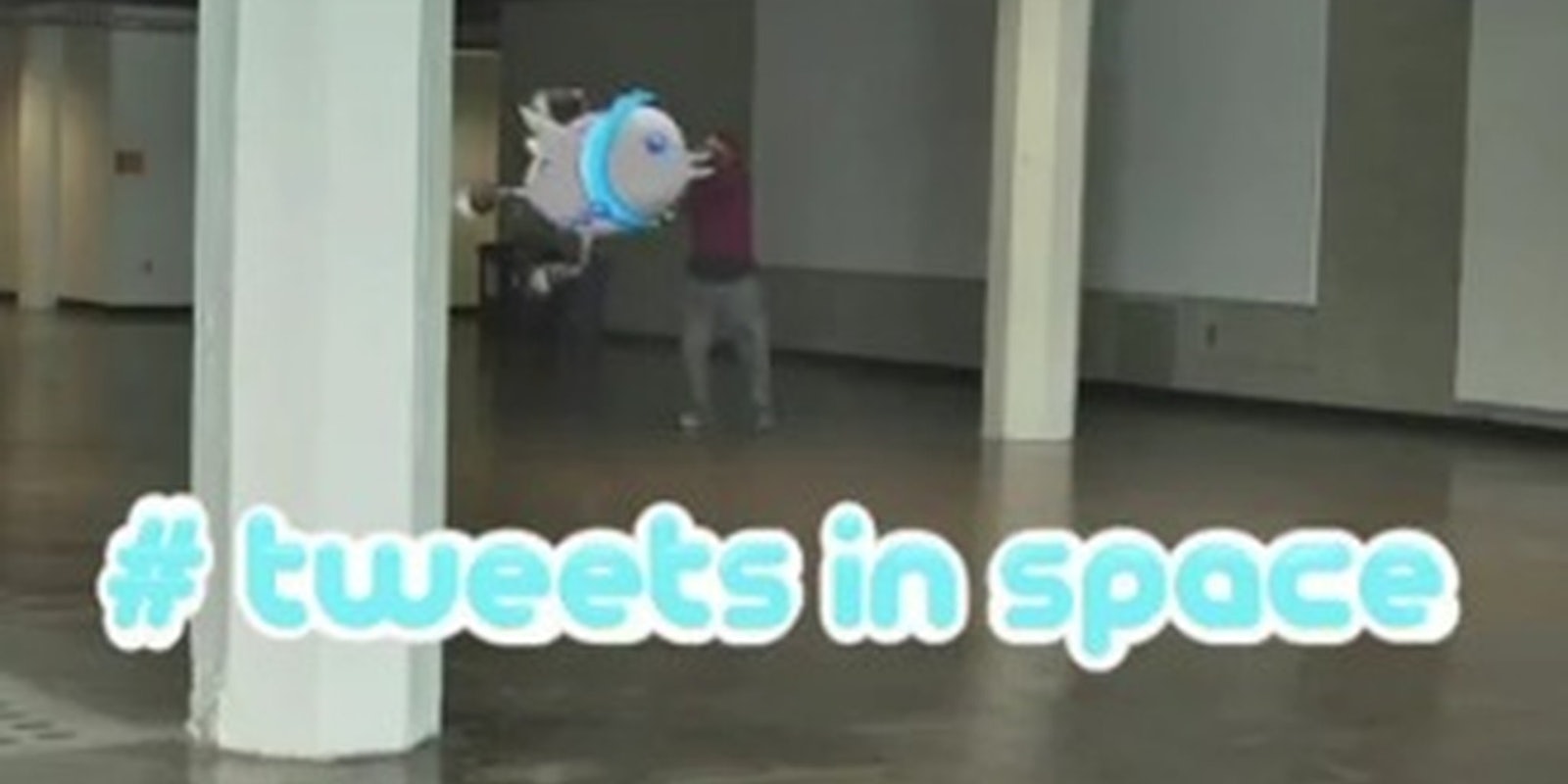Twitter’s bringing the world together in 140 characters or less. But can it bind together life forms from across the universe?
A project that aims to send tweets to a distant planet capable of sustaining life is in the process of being funded, and your tweets could potentially be picked up by extraterrestrial life forms.
At a live performance scheduled for September, Scott Kildall and Nathaniel Stern plan to send tweets bearing the #tweetsinspace hashtag to GJ667Cc, a planet that has the potential to support life. The planet is 22 light years or around 164 trillion miles away.
The duo behind the plan has created other collaborative art projects in the past, such as Wikipedia Art—artwork that was composed on Wikipedia so that anyone can edit it. Following the success of that piece, they’re now looking to the stars.
“The intersection of our work is around networks and performance,” Kildall told the Daily Dot.
“[S]ince we live in separate cities, communicating as many of us do exclusively by the Internet, we wanted to make a project in which the public could perform but also looked at our own need for understanding one another at 140 characters at a time.”
“Scott planted the initial seed of combining Internet art with transmission and space art,” Stern added.
“[T]hrough our manic brainstorming process it grew into using the discussion platform of Twitter and lending an amplification and intensity to what it ‘does’ as a stage and platform, by beaming a feed to the closest exoplanet that might support Earth-like biological life.”
Stern and Kildall are seeking funding for the project through RocketHub, which, unlike Kickstarter, offers an All & More model where project creators get to take all the cash they raise—regardless of whether the project meets its stated goal. With 18 days remaining until the funding deadline, they’ve raised $2080 of the $8500 funding goal.
They plan to borrow or build a communication system, or upgrade an existing one. This will be used to send the tweets at the International Symposium on Electronic Art (ISEA), taking place in Albuquerque, N.M., in September.
The pair plans to collect and transmit all tweets bearing the #tweetsinspace hashtag to GJ667Cc to inform extraterrestrial beings of our culture and society. The tweets will also be archived on a website.
“By structuring this project as a performance, we will have a live component where people can respond to each other’s tweets in both physical space at ISEA, and at home, through the Tweets in Space website,” Kildall noted. “Each tweet can then build upon the previous, so that extraterrestrials who are listening could hear a whole conversation rather than single short messages.”
Stern said the project is more than a public performance, that it aims to encapsulate how humans converse:
“Although we take the science of the project very seriously, this project is more about us than anything else. What do we say, and to whom, in public, online, in brief? How do we respond? What does that do? These are questions worth asking in the everyday, and Tweets in Space reminds us how important these questions are, by making them more important, even if just for 45 minutes in September.”
So far, the project has created a spirited debate on Twitter.
“There has of course been criticism (mostly social, some scientific), but more excitement,” Stern noted. “There have already been #tweetsinspace political posts, requests for pick up, and dialogues around impossibility and imagination.”
We’ve already had astronauts tweeting from outwith the Earth’s atmosphere. Getting a @reply from outside the galaxy would be—quite literally—out of this world.
Photo via YouTube


